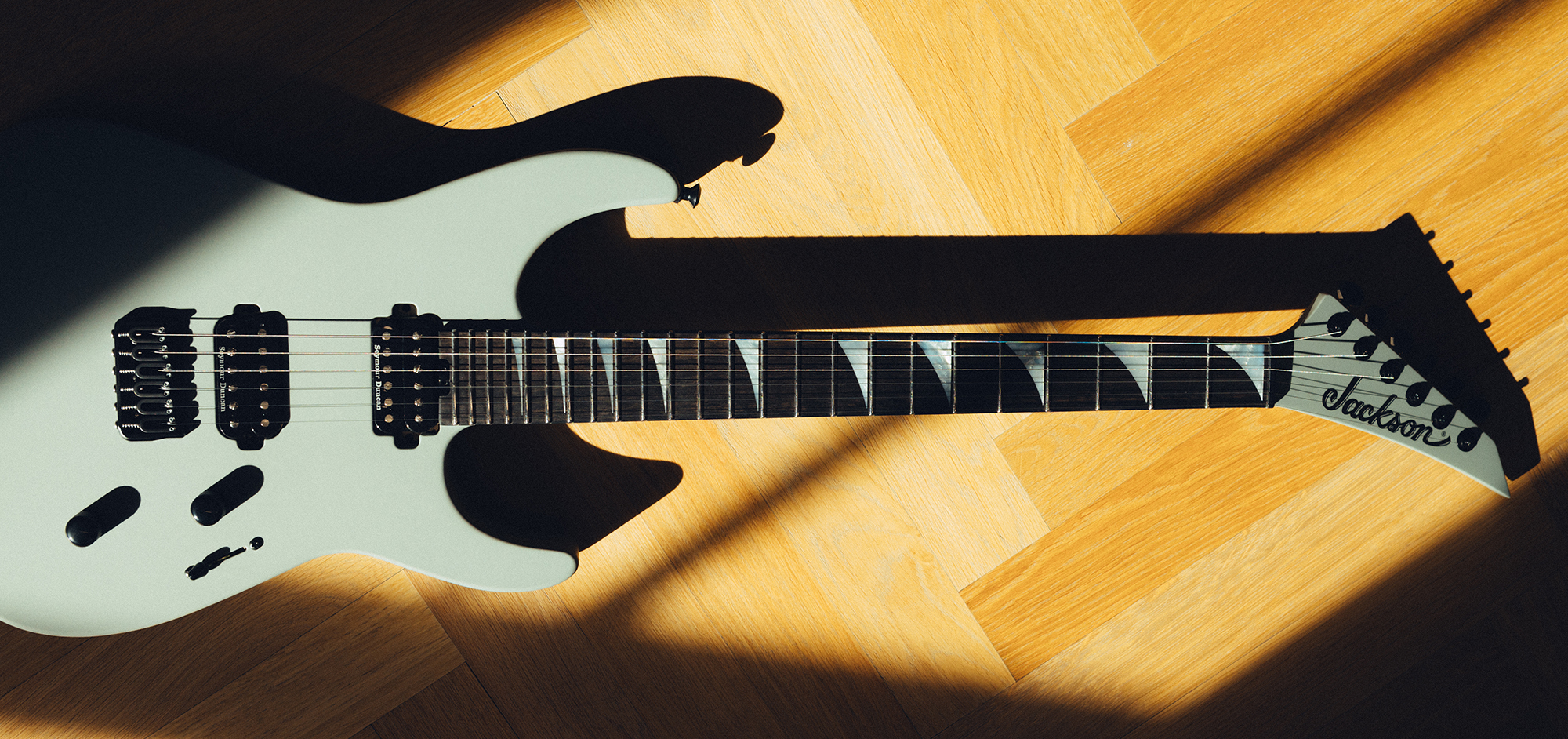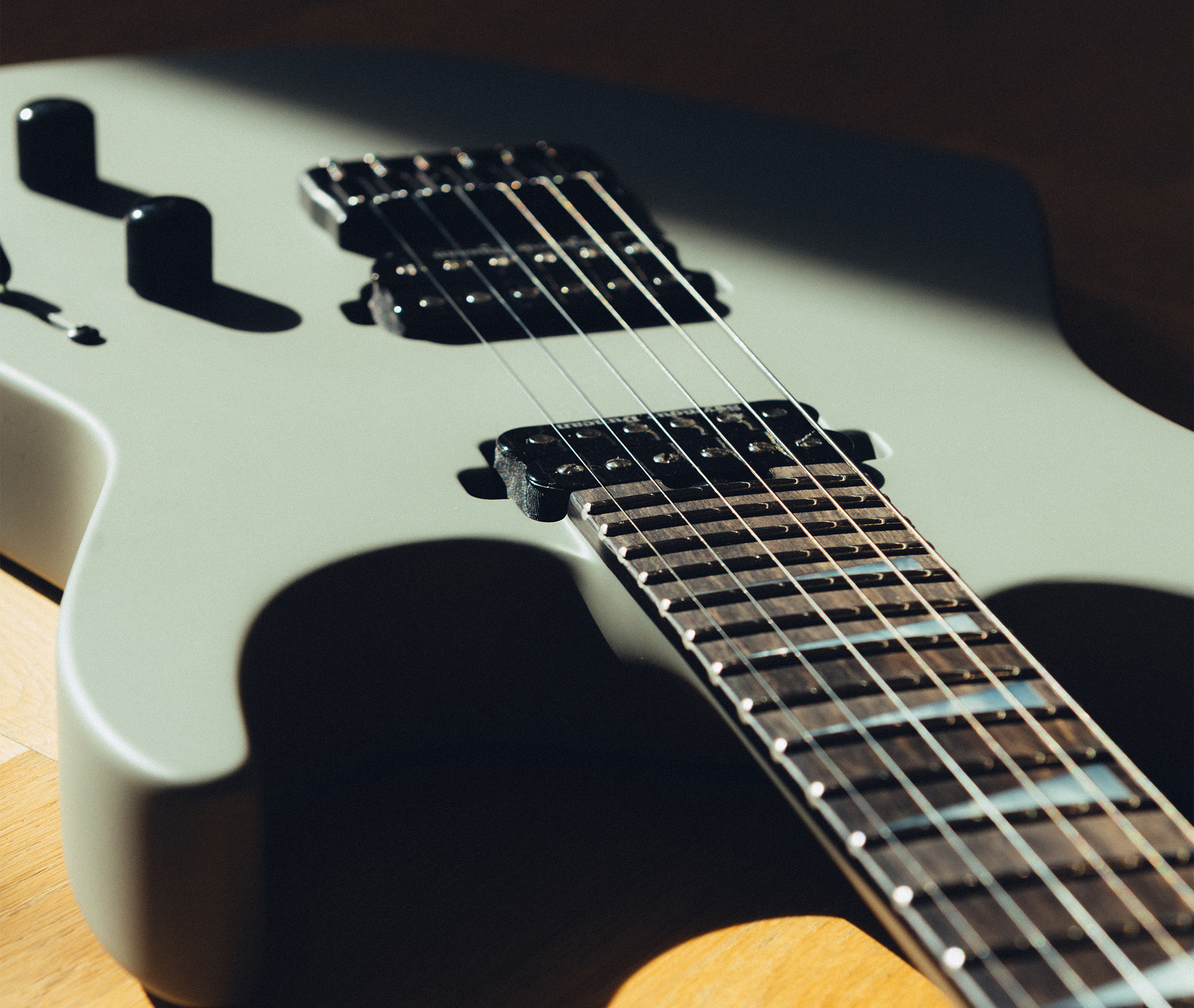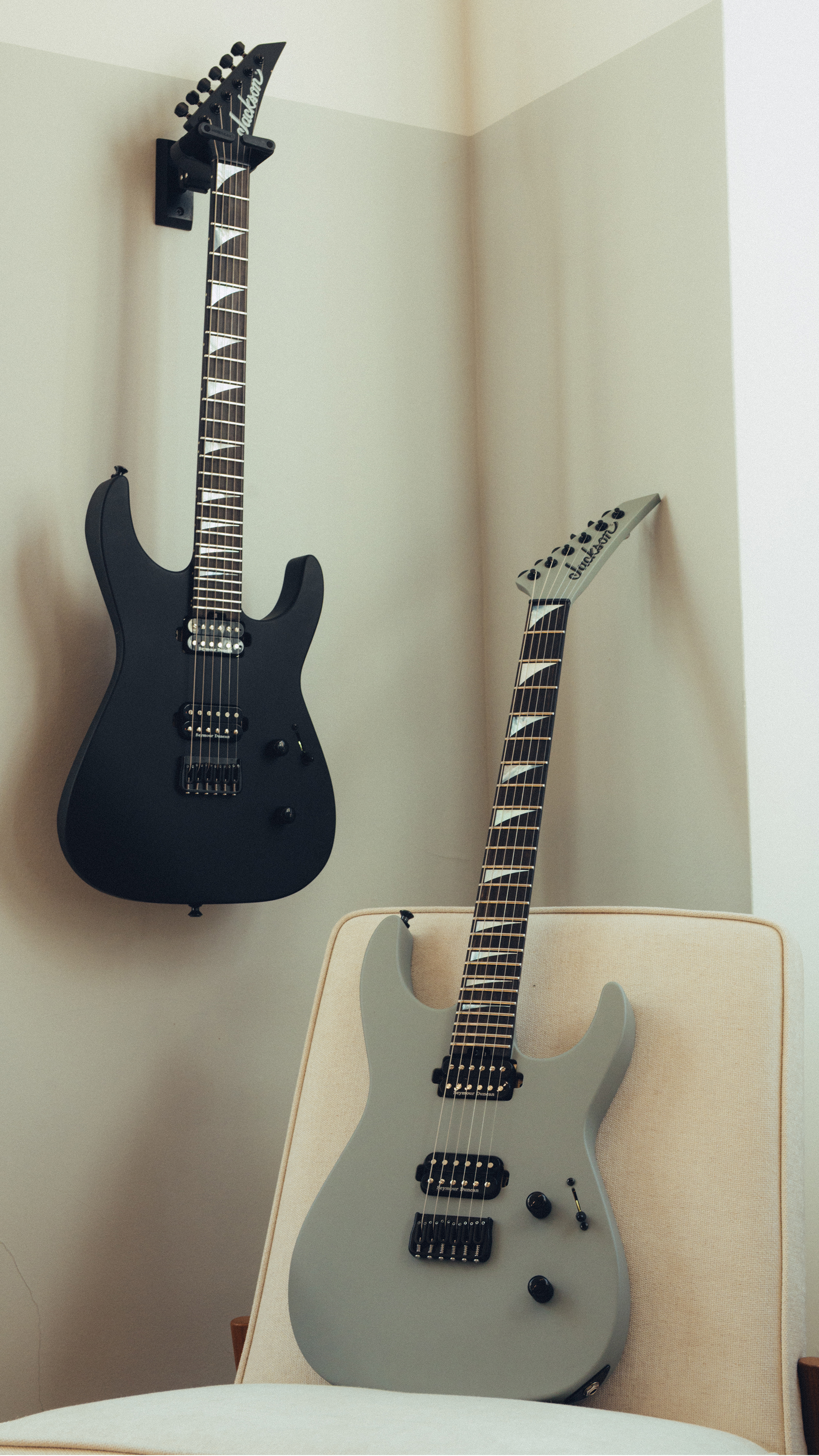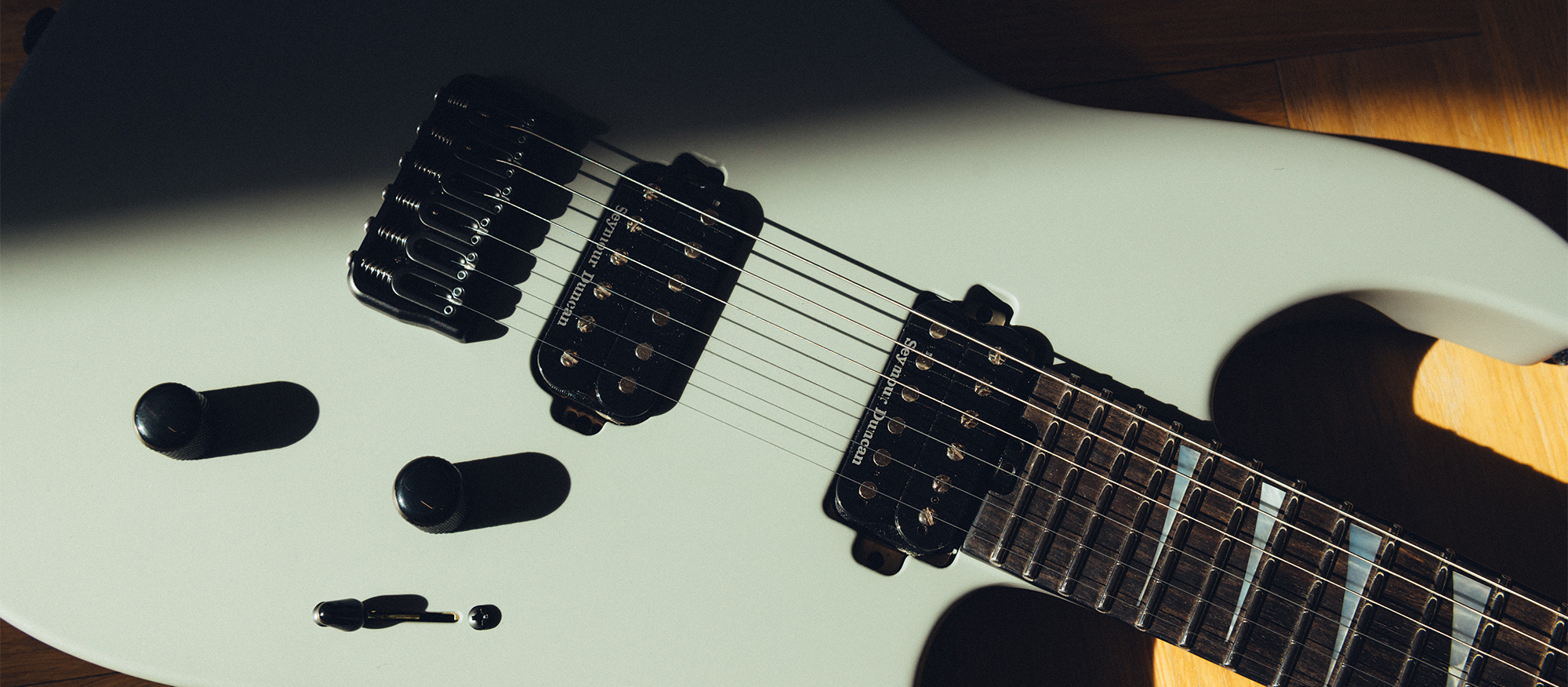GuitarPlayer Verdict
The third iteration of the company’s popular American Series Soloist, the SL2 DX is designed for metal, with Jackson’s iconic angular inline headstock, menacing Shark-Fin fret markers, deep black ebony fretboard and stainless frets. It boasts the classic combo of a Seymour Duncan JB TB-4 humbucker and a ‘59 SH-1N, combined with a five-way selector that opens the door to a broader palette of sounds than you might expect from a metal-edged stalwart, making it perfect for modern metal styles.
Pros
- +
Designed to play fast and hard
- +
Pickup combination offers many tonal options
- +
Split coil sounds available with a five-position switch
- +
Extremely stable tuning
Cons
- -
Case is lightweight and offers a loose fit
You can trust Guitar Player.
Given the chance to check out Jackson Guitars’ most recent additions to its American Soloist series, the SL2 DX, I could hardly pass it up. After all, Jackson was first to embrace the high-velocity and fierce driving styles employed by electric guitarists in the early hard rock scene, and helped launch metal into the mainstream.
Even 40 years out from the small Charvel repair shop that started it all, the company has a black-nailed finger on the pulse of today's metal players and the style’s ever-growing number of subgenres.
As metal guitars go, its specs are spot-on: a Superstrat design with a familiar pair of well-respected Seymour Duncan pickups, 24 jumbo stainless-steel frets, and a three-piece maple neck with neck-through-body construction. In addition, my review model — the SL2 DX HT — features a Hipshot hardtail bridge; the SL2 DX version comes with a Floyd Rose 1500 Series double-locking tremolo bridge system.

The SL2 DX is actually the third iteration of the company’s popular American Series Soloist. It’s designed for metal, and its looks don’t lie. With Jackson’s iconic angular inline headstock, menacing Shark-Fin fret markers inlaid on the deep black ebony fretboard, stainless frets and a no-fuss satin Porsche Grey unbound finish, it's an enticing package that begs to be picked up and played. (The SL2 DX HT is also offered in Lemon Ice, Scorched Earth and Snow White finishes.)
Even before playing it, I was impressed by how the SL2 DX felt in my hands. The build is extremely solid, which is surprising when you realize that its shallow “D” shape has a heelless joint and offers unencumbered access to all 24 frets.

This is down to the combination of the three-piece maple neck, dual-action truss rod system, and an internal graphite neck reinforcement that allows for its ultra-friendly shape right up to the 24th fret. These are important, and possibly critical, features for metal players who play in dropped tunings. It also provides for an extremely low action (it came setup that way) that gives the fretboard a fast and silky feel, while it supports accurate muting and other techniques experienced metal players can really milk.
Playability in the upper registers of the neck is surprisingly easy thanks to the rolled ebony fingerboard and the neck's compound radius, which makes the fretboard slightly more flat at the upper frets. With the stock light strings and low action, the guitar felt effortless.
All the latest guitar news, interviews, lessons, reviews, deals and more, direct to your inbox!
I played the SL2 DX pretty aggressively for several hours on day one, and the combination of the Hipshot 6 fixed bridge and Gotoh MG-t locking tuning machines kept it solidly in tune. Even after the guitar spent a night in the case and endured some travel, tuning was nearly spot on.

The SL2 DX has a Seymour Duncan JB TB-4 humbucker — known for its high output and a thunderous low end — in the bridge position, and a Seymour Duncan ‘59 SH-1N — equally famous for its sparkling treble and characteristic scooped mids — in the neck position. It’s a popular pickup combination that delivers both searing heavy and smooth clear tones.
While either pickup is a good fit for most heavy styles, the variety of tones offered by the five-position pickup switch is extraordinary.
You’ll find both a volume and a tone control on the SL2 DX models and you’ll likely want to use them both with all the additional tonal range you get from these pickups, especially compared to an active pickup configuration.

I tested the SL2 through my Fender digital rig using various emulations, and through a Mesa/Boogie Filmore50 amp with a Friedman BE-OD overdrive pedal. While a Mesa Triple Rectifier or Mark V might have been a better test of the guitar’s metal tones, I got the highly responsive and deep chugging I’d hoped for from the JB. I’ve heard others describe the pickup as “hot but not too hot,” which I would agree with. It’s compressed, but by carefully adjusting the guitar’s volume it was easy to get a reasonably clean tone out of it.
The 59 pickup is Seymour’s take on the classic Gibson P.A.F. humbucker. Notes are clear and well defined note, even with a healthy amount of distortion, and I got a beefy rhythm sound that kept its definition nicely. Melodies and single-note lines sounded sweet and clear, with a consistent, pleasant percussive attack. It sounded great clean, and just as good dirtied up a bit, making it a nice complement to the JB.
Positions two and four split the coils and open the door to a slew of other options that work great with chorus and various reverbs, along with lots of overdriven sounds. While these tonal choices may be of less interest to traditional metal enthusiasts, they do offer more opportunity to use this instrument in other musical contexts. Hard rockers will appreciate the fat tone and fast action, for sure.

There are many tonal variables here, so your mileage may differ, but I found lots of options for both clean and overdriven sounds, including some unexpected tones coming from a guitar built for metal and shredders. As metal has evolved away from in-your-face driving sounds to include more tonal variation — even some clean environmental passages — it would seem that this pickup combination might provide inspiration for creative metal players looking for new sonic territory to conquer.
Clearly built to handle the rigors of live performance in the metal arena and come back for more, the American Series Soloist SL2 DX is made from start to finish in Fender’s Corona, California factory. It is, as the company has promoted it, a premium guitar built for speed and metal, and it offers even more than you might expect from a modern high-performance axe.
However, to make it road ready, you’d be advised to get a hardshell case, as the light semi-rigid case it ships with offers only minimal protection and doesn’t seem to be a great fit around the lower bout.
Not just another fast guitar with the company’s trademark aggressive look, Jackson’s new SL2 DX’s impressive set of features, solid craftsmanship and thoughtful design put it right on track with the evolution of modern metal. More than worth a look, this guitar screams to be played.

SPECIFICATIONS
CONTACT jacksonguitars.com
PRICE $2,399 gig bag included
NUT Graph Tech TUSQ XL, 1.6875" wide
NECK Jackson Speed Neck, three-piece maple with graphite reinforcement and dual-action truss rod with wheel adjustment
FINGERBOARD Ebony, 25.5" scale, 12" to 16” compound radius, bound edges with Luminlay side dots
FRETS 24 stainless steel jumbo
TUNERS Gotoh MG-T locking
BODY Alder with Jackson Soloist shape
FINISH Porsche Gray
BRIDGE Hipshot 6 (fixed .175)
PICKUPS HH Seymour Duncan: JB TB-4 bridge, ‘59 SH-1N neck
CONTROLS Volume, tone, five-position blade switch
STRINGS Nickel-plated steel, 009–.042
WEIGHT 7.6 to 8 lbs (depending on model)
BUILT USA
PROS Designed to play fast and hard, many tonal options, extremely stable tuning
CONS Case is lightweight and has a loose fit

